X-Men: Days of Future Past is good. Really good.
I wasn’t fully aware of just how much I needed this film until I was about ten minutes into it… by then I was fully immersed and it was clear this was going to be something very special.
This is going to be a long, in-depth review, by the way: I just have way too much to say about this film. Also, as if this word-count massacre right here isn’t enough, I also recorded a podcast with Mumra 2K, discussing the film (see here).
I generally don’t get excited about cinema releases. I have to go back to Revenge of the Sith in 2005 to find the last movie before DOFP that I was properly excited about seeing. And like with that final Star Wars prequel, I was nervous about DOFP too, wanting it to be great, but not entirely sure it would live up to that hope; particularly given how uninspired I (and mostly everyone else) was by X3: The Last Stand and by the Wolverine movies.
The broader mythology of the X-Men world in its various forms has been a cherished part of my life and my consciousness for a very long time; it was therefore disheartening to find myself losing interest in the film franchise.
From the first time I heard that Days of Future Past was going to be the next X-Men cinematic experiment, I was cautiously optimistic – if done well, it could be a great restorative act, while if done poorly it could further exacerbate the accumulated problems in the film universe. I cared about this movie; unlike most other films of its type where my interest is largely academic in nature.
And caring about it beforehand can enhance your receptivity and anticipation, but it can also give you too much expectation and undermine your ability to appreciate the film on its own terms.
I needn’t have worried; the film met my expectations, and in fact in many regards exceeded them. Make no mistake – X-Men: Days of Future Past not only takes the X-Men film franchise to a new height, it raises the bar for the superhero movie genre.
In fact it is, hands down, the very best film to have been derived from the prolific Marvel Comics cauldron to date; for all the ongoing plethora of Marvel-derived movies scheduled for the coming years, it is going to be very difficult for anything to match this.
And I don’t mean in terms of effects or spectacle, because that can obviously be done; but no, I mean in all the other respects that make a film more than the mere sum of its parts. Spectacle doesn’t mean anything anymore; every big-budget blockbuster has the state-of-the-art special effects and CGI. For the most part it’s no longer mind-boggling or jaw-dropping, just jarring. What Days of Future Past has beyond all that surface-level stuff is feeling; it has heart and soul.
DOFP not only ticks all the boxes, but it ticks all the boxes really quickly too – well within the first hour.
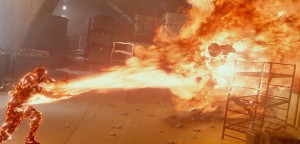
The ‘future’-based opening sequence is one of the best cinematic opening sequences I can think of; watching Kitty, Sunspot, Blink, Warpath and Bishop taking on Sentinels reminded me of the way Revenge of the Sith opened, diving straight into the action and opening the movie in jaw-dropping, high-octane fashion. That opening action sequence is probably the very best sequence of its type in any of the X-Men films to date.
While the big action pieces of X-Men 3: The Last Stand are wholly forgettable, the early DOFP sequence really does embed itself in the memory. There are reasons for this beyond the mere surface level of superb action/effects and the great visual feast; you actually feel for these characters, not just Kitty or Iceman, but even those ‘fringe’ characters who barely have any dialogue – Blink and Sunspot in particular.
I can’t sing the praises of this opening sequence enough; if I was already excited beforehand, once the stage had been set with these opening twenty minutes or so I was already wishing for a Quicksilver-style time-out so that I could just process what I’d seen so far and brace myself for the rest of the film.
But of course this movie didn’t give me that breather; from that opening sequence onwards the film flows at a great pace, ranging from superb action sequences and intriguing (if sometimes logically questionable) plot devices to the kind of meaningful, engaging character moments that have been the X-Men comic world’s defining quality in its best eras.
The early sequence, as I said, captures that bleak, Dystopian future very effectively, with its concentration camp connotations, the mass dumping of bodies, etc.
It is visually gripping and you really do feel like you’re propelled into a world without hope, a world in which all the idealism has failed and in which the great archetypal struggle is all but lost. It’s the world that Magneto always imagined an inevitability and that Charles Xavier had always been too idealistic to believe would occur.
In terms of the comic-book reference, it reminded me less of the grim future depicted in the actual 1981 Days of Future Past Uncanny X-Men issues and more of the dire world presented in the alternate timeline of the Age of Apocalypse event in 1995 X-Men comic titles. Or the more recent world-without-hope tone and feel of the genuinely superb X-Men: Second Coming storyline in the comics.
I loved the whole feel of this small, final rag-tag band of mutants in the future, with their backs against the wall, fighting for their survival (and the survival of the species) against the insurmountable odds and horrific, merciless machines of extermination. That whole, almost Matrix/Nebuchadnezzar-esque feel to their campaign is so far away from the almost idyllic mansion/school setting of X1 – this really is the mutant Armageddon and it feels like it. We assume, in this depicted future, that most of the faces and names we know from the X-Men world are long deceased and all that’s left is Kitty, Bobby and their tiny, though highly inventive and persevering, little team, soon joined by Professor X, Magneto, Logan and Storm.
Particularly in the final confrontation with the invading Sentinels, the heroism and the hardship really comes across powerfully as these last surviving X-Men continue to work together as a superbly inter-functioning unit in what really is ‘the last stand’ of Mutantkind (forget X3 misusing that title).
It’s especially hair-raising watching these characters sacrifice themselves one by one to buy the Professor, Kitty and Logan that little bit more time, particularly Blink making sure she opens one last portal to allow Magneto to get back inside.
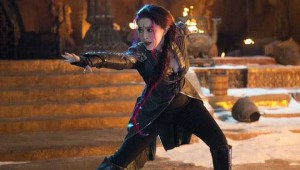
This is the arena where heroes and martyrs are made, this is the age of real heroism, where all hope is almost lost and all that’s left are these last, brave few, fighting until the bitter end.
This kind of apocalyptic, post-Holocaust mutant landscape is already familiar to readers of X-Men comics, of course, introduced in Claremont’s original aforementioned Uncanny X-Men #141, but further explored and expanded in various X-Men mythologies over the decades. But for film fans the grim world depicted in DOFP is a big departure from the X-Men world they know. And even as someone already versed in those alternate futures and timelines of the X-Men comic world, this bleak future world depicted in the early scenes of this movie still made a powerful impression on me.
I can still almost taste it in the air; both the smoke and sulfur and the desperation.
The deaths – even though they don’t really count once that future has been expunged by Trask’s survival in 1973 – got me in the gut, more than I would’ve thought; Blink, Sunspot and Iceman in particular. That really is testament to just how well those sequences came across and how sympathetically those characters were rendered even in their relatively minor roles.
Like in Revenge of the Sith and the Jedi extermination montage, it’s proof that you don’t necessarily need dialogue or exposition to create a sympathetic character; it can be done purely visually, both in terms of cinematography and in terms of putting across or capturing the essence of a character or a situation through visual nuances alone. You can care about Blink, for example, without her uttering a single word and without knowing anything about her (as would be the case for most of the cinema audience). Blink was actually one of the things I was concerned about beforehand, but her interpretation in this film is wonderful – more on her later.
Almost like a silent movie or an impressionistic painting, parts of these sequences are like vast impressionistic and emotive assaults on the senses.
With the grim scene set in the future and the stakes established, the plot moves very quickly with the reunited remnants of the X-Men deciding that Kitty will send Wolverine’s ‘consciousness’ back in time to 1973: his task to find that era’s Charles Xavier and Erik Lensherr and convince them to help him prevent Mystique from assassinating the Sentinels’ creator Bolivar Trask (as opposed to Senator Kelly, who is Raven’s target in the original comic storyline).
Before we know it, Wolverine is waking up in the past and the race is on.
It’s worth mentioning how quickly, how smoothly all of this unfolds, the story unfolding at a brisk pace when it could’ve easily, in the hands of lesser-able writers, been bogged down in exposition and explanation at this stage. While there are question marks over the logic – for example, since when could Kitty Pryde send people’s consciousness back in time? – the glossing over of these issues in order to move the story along quickly better serves the film on a cinematic level, if not necessarily being something that will satisfy the more nit-picking fraternities.
I’ve already posted recently about the original 1981 Claremont/Byrne Days of Future Past issues of Uncanny X-Men, so I won’t go into that here; suffice it to say there are numerous differences in the transition to screenplay, but those differences are simply necessities in the change of medium, as what works in a two-issue comic-book storyline isn’t what would work in a two-hour film, particularly when the films, unlike comics, are always trying to be easy viewing for the uninitiated.
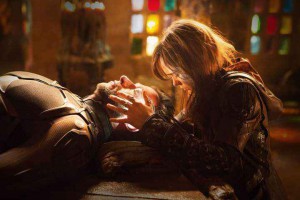
So apart from the plethora of nitty-gritty changes in detail, one of the key changes is that Wolverine and not Kitty Pryde is that one who’s consciousness is sent back in time. Now this was one of the main things in the months prior to the film’s release that I was unenthusiastic about; it was my opinion that Kitty/Ellen Page should’ve been kept as the driving character, as the one going back into the past, both because we’ve already had far too much Wolverine in these movies and also because I felt Ellen Page would be more than capable of pulling off that central/driving role in the movie.
Having now seen the movie, I’m happy to retract my initial misgivings.
Wolverine as the central plot-device is probably the only way the writers could’ve gone, quite simply because Wolverine/Jackman is the poster boy for this franchise and the film studio naturally has to play to the widest cinematic audience and not to the minority of comic-book purists. I personally still would’ve liked to have seen Kitty in that role instead, but it’s obvious that Wolverine was the commercial necessity (and besides that, Kitty would’ve been either a child or not born yet in 1973, so that wouldn’t have worked).
Bishop and Cable were apparently also considered as possible characters to perform the time-travel role, both of whom would’ve been obvious, logical choices from the comics (and Bishop specifically performed that role in the 90’s cartoon series adaptation), but neither of which would’ve necessarily worked on-screen, both because they wouldn’t have had the pre-existing dynamics with Xavier and Hank that Logan does and because it would’ve taken up too much additional time to establish and explain who Bishop or Cable are.
The other minor issue is, as mentioned, that Kitty here is the one sending Logan’s mind back in time (a power I’m pretty sure seems to have come out of nowhere), where in the 1981 comic it’s Kitty being sent by Rachel Summers, a character whitewashed from the Days of Future Past film though probably for understandable reasons. Even though Kitty isn’t afforded the central role here, she is thankfully made important to the plot anyway in the Rachel Summers role and is also presented as the loose leader of that beleaguered X-Men team in the China sequence, at least prior to the Blackbird’s arrival.
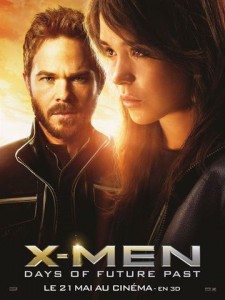
That was something I appreciated and enjoyed, as it would’ve been highly unfitting to adapt the Days of Future Past storyline and not have Kitty Pryde play a significant role (the cartoon adaptations, on the other hand, whitewashed Kitty from their stories completely).
As I’ve said elsewhere, I was already a little bored of Wolverine in these movies some time ago; X2 was probably the last time I found him interesting. But watching Logan in this movie was pleasantly the first time since X2 that I’ve enjoyed his character. That might be partly because, although he was the driving plot-device, he wasn’t the emotional or character focus of the film. This film was much more about Charles Xavier, Mystique and to a slightly lesser extent Magneto. Wolverine is simply there as a necessity, but he isn’t the real focus; his is therefore an unintrusive presence for once and that better serves a film of this type, which really does need to be more about the other characters.
In general the splitting of the narrative between the future/Dystopian setting and the Wolverine-in-the-70s story works effectively throughout the movie, particularly at those moments where we’re yanked forward from the main story setting in the 70s back to the ‘future’ scenes in China with Kitty trying to keep the unconscious Logan’s time-travelling consciousness in the past. It’s something that could’ve been awkward and cumbersome, something that could’ve been jarring; but both sides of the story maintains the right level of tension.
While it could be argued that some of the momentum and tension in the 1970s side of it is lost after Mystique’s failed assassination attempt in Paris, I still feel the film broadly sustains a strong pace even after that.
Spectacle aside, perhaps the biggest strength of this movie for me is the characterization. That isn’t something I would often say about a film in this genre, but X-Men for me should always be about characterization.
It’s so key a part of what I always loved about the comic titles. It’s not the effects sequences or spectacles that I remember about X movies, it’s always characterization. When I think about what I liked about X1, it’s Ian McKellin’s Magneto, it’s Anna Paquin’s emotive Rogue and it’s Hugh Jackman’s arrival as the definitive Wolverine (how they’re going to replace this guy as Wolverine once he decides he’s had enough, it’s impossible to imagine). And when I think about what was wrong with X3, so much of it is about how badly Magneto was written.
The heart and core of the X-Men mythology in print is the depth and motivations of its central characters; and when the X-Men film franchise has been good it’s been at the points where the films have played to that strength.
The brilliance of this film is that its emotional centre is in its characterization of two main characters; Charles Xavier and Mystique/Raven Darkholme.
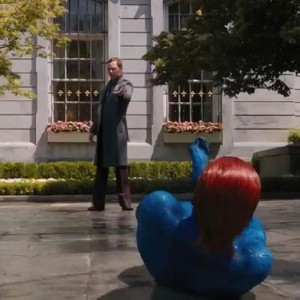
Now that to me isn’t an obvious writing choice; someone in the writing process made a very conscious decision to really make this extravaganza a character piece centered on Mystique and Professor X and it was a key decision that has everything to do what works so well about this film. Some of that focus was already well established in First Class in terms of Charles and Raven and their relationship, but where that movie was more centered on the ideological origins of Magneto, DOFP shifts the spotlight more squarely onto Mystique and Xavier.
It’s worth nothing that Charles Xavier, despite being in essence the central figure of the X-Men world and its ideological figurehead, has never really had any meaningful characterization in any of these films.
In pretty much every movie Professor X is there more as a symbol or at best as a nexus, but he has never been deeply explored beyond his idealism. DOFP does it beautifully. We are shown a Charles Xavier in this movie that we are unfamiliar with; remarkably I have to say that even I, as someone grounded in the comic books, have never seen this version of Professor X. And it’s a fascinating augmentation of the Charles Xavier we know, rounding him off into a much more complex character.
The Charles Xavier we see in DOFP is a broken, fallen figure. He has lost everything he once held dear, everything he once believed in, everything he once loved. He has lost his purpose. He has lost Raven and Eric both, along with all the students he gathered in First Class. And he has lost his legs. Now he’s a long-haired, reclusive figure, hiding in his enormous estate and shooting up smack… ok, not smack, but the drug-addict metaphor was pretty obvious.
To my mind the echoes of Orson Welles’ Charles Foster Kane secluded away in Xanadu were obvious here in the way Xavier is presented (bizarrely, and probably a little off-the-mark, these scenes also for some reason reminded me of the loose depiction of Kurt Cobain tottering about his lonely mansion in the Last Days movie). Those early scenes where Logan discovers the 1970s Charles Xavier are terrific scenes; a perfect mixture of humour, emotion and perfect character dynamics. I’ve already said before how impressed and surprised I was by how much I liked MacCavoy’s Xavier in First Class; that’s even more the case here in DOFP.
This Charles Xavier couldn’t be any further away from the idealistic, even cocky, young man of First Class.
Even the later moment where the future Charles communicates with the past Charles works beautifully, though it could’ve easily ended up being cheesy and overly sentimental. I mean it is sentimental, but it’s not annoyingly sentimental; it works just about right.
And it works because it’s not just a piece of cheesy idealism being communicated in a vacuum – it’s a desperate sentiment being communicated by a Charles Xavier in the future that is watching the last of his people being slaughtered by the inhuman machines and is mere minutes or hours from his own death and failure and to a Charles Xavier in the past who is in the midst of his own (more selfish, self-centered) despair and weakness, a shadow of his former self desperately in need of counsel and of hope.
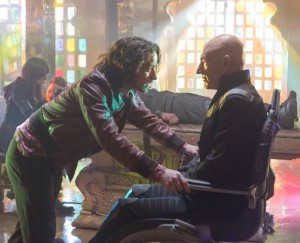
And the voice of his own self in the future echoing back to him across the decades is the very voice of counsel he needs – the hope he himself is looking for is to be told, to be reminded, that he is the one everyone needs “to hope again”. Even the hardest-hearted of cynics, even someone like me who more often than not cringes at overly sentimental moments in films of this kind, can’t roll our eyes or scoff at this scene.
This moment, at this stage in the film, is highly effective. It is also aided, of course, by Patrick Stewart’s and James McCavoy’s performances; in the hands of two lesser actors this might’ve been a different thing entirely.
There’s also something pleasingly poetic about having Logan, who was led-by-the-hand by Professor X in the first X-Men film now going back in time and performing that guiding role to the younger Professor X to ensure that he becomes the Professor X of the future. That poetic undercurrent to it is of course overtly alluded to in the script, but it would’ve been evident to most people anyway who’ve seen the first X-Men film.
As much as DOFP can be said to massively ret-con the franchise (more on that later), it does in some regards also link up thematically with elements of the earlier films – and that’s something both pleasing and highly laudable about the enterprise and one suspects much of this might be down to the presence of Bryan Singer.
The veterans Patrick Stewart and Ian McKellin have a much simpler role in the affair compared to the drama of MacCavoy’s and Fassbender’s material, but they’re both used to effective, poignant effect. Patrick Stewart in particular seemed even more tender and frail as Xavier than we’re used to; I don’t know if that’s just how Patrick Stewart comes across nowadays (I haven’t seen him in anything for a number of years, other than endlessly rewatching him in I, Claudius) or if that’s how he was playing it as a performance, but it added very nicely to the tone of the scenes, and I really liked the more tender moment between the two of them towards the end where the two of them briefly take hands and are reconciled.
I also thought the older Magneto’s China heroics against the Sentinels offset the younger Magneto’s more ‘villainous’ (for want of a more appropriate word) appropriation of the earlier Sentinels nicely, and it also gives the older Magneto a great moment of heroism and even redemption on that side of the franchise, which is particularly nice following the dreadful characterisation of Magneto in X-Men 3: The Last Stand.
This is clearly more McAvoy’s and Fassbender’s show at this point, however; which is fine, they both bring something genuinely great to their respective characters, McAvoy in particular.
One of the absolute standout scenes is the confrontation between Magneto and Charles on the aeroplane, both men unable to contain their underlying emotion and bitterness at each other, each blaming the other for the dire events that have unfolded beyond the Cuba incident in First Class.
For me the Charles/Magneto dynamic is and always will be the central character dynamic of any incarnation of X-Men (it isn’t anymore in the current generation of comics, but that’s another matter) and the films have always been aware of that and usually handle it astutely. They’re certainly well handled here.
When they do eventually ‘make up’, so to speak, and play chess that too is a heartening moment – hey, it’s always good to see Charles and Eric sat at a chessboard; somehow when those two are sitting playing chess the universe somehow seems to be in correct alignment.
As for Mystique, while I think Jennifer Lawrence is less outstanding in her role as McCavoy is in his (or Fassbender as Magneto), the character is superbly written. I’ve always liked the way Mystique has been used in all these X-Men films. She’s always been well characterized and well used, but it isn’t since these last two films that she’s become a proper focus. Though she had some slightly cheesy moments in First Class, here she’s all business. Any time Mystique is fighting in any of these movies, it’s always been superb; the character’s drop-dead-awesome look and her physicality just always lends itself to that – give me a Mystique fight sequence over any equivalent Wolverine sequence any day, thank you.
So there’s nothing new in that in DOFP; but the noticeable difference to me is how much emphasis there is on her facial expressions and on her eyes during her assaults, those lingering shots really designed to express her emotion and intent. You can really see – not just see, but taste – the determination in her face, in her body language, when she’s on a mission or she’s taking someone out.
I don’t think I’ll ever get bored of seeing Mystique in action sequences. But it’s the emotional depth to her character that really stands out in DOFP.
I wrote a recent article of the 10 best X-Men characters in the films and I highlighted in that post why I think Mystique has worked so well in these films where other characters haven’t. Only part of that is down to the look/feel of the character; the fact is that even when she isn’t central to the story, she always seems to get the memorable lines and the most resonant sentiments. For example she barely has any dialogue in X1, but that line in the helicopter – the whole “… people like you are the reason I was afraid to go to school as a child” sentiment – always stuck with me from that movie.
Mystique, of course, because of the very nature of her mutant power – the ability to appear however she chooses – has always been the perfect tool for exploring the mutant dilemma. This was hit on in X2 in a simple Mystique/Nightcrawler moment; Mystique, who can look as ‘normal’ or as human as she chooses, nevertheless chooses to look like the classic ‘mutant freak’. That theme was well explored in First Class and is the main reason Mystique sides with Magneto at the end of that film and not with Charles – Charles, despite how much he loves Raven, always displays an awkwardness with Raven’s ‘true’ mutant appearance, whereas Erik encourages her to be her true self, her true mutant self as nature intended.
That theme is beautifully hit upon in First Class, in regard to both Mystique and Beast. And a central theme of DOFP is the fall-out from the tug-of-war that has gone on with Raven being pulled between Charles and Erik and in effect escaping both of them and striking out on her own. She is the dangerous weapon, the loose cannon, that the two elder mutant figureheads have unleashed on the world; and in DOFP they are both forced to track her down and correct their mutual ‘problem’.
What is particularly pleasant as a fan of the X-Men comic world is to see Mystique for the first time in these films being in control of her own actions and destiny (at least until the end, that is), being the lone agent and the assassin and woman on a mission; this is in contrast to her usual role in these movies as a supporting character for either Magneto or Charles. The greatness of Mystique as a comic-book character is almost always when she’s in control, when she’s taking the imitative, as in, fittingly enough, her role in the original Days of Future Past comic storyline; and this film felt like it was paying much more dues to that Mystique from the comics.
This really is Mystique’s spotlight as far as the film franchise goes. The Mystique of DOFP is the bridge between the Mystique of First Class and the Mystique of X-Men 1 and 2.
On a side note, there is just a hint in those mansion scenes that there may have been more to the Charles/Raven relationship than just a platonic brother/sister type thing; I’m particularly thinking of the framed picture of her near his bed. The same is hinted at between Raven and Magneto later. In both instances I’m happy to just have it hinted at but not explored further – that vagueness to it is fine. In general I dislike the popular paradigm in movies that any male/female relationship has to have a coupling element to it in order to be ‘meaningful’; the X-Men comics are full of deep platonic bonds and these are far more endearing than the classic, cliched ‘pairing off’ of characters.
It’s true even for the films – I’d much rather watch the Logan/Rogue scenes from X1 than the Jean/Scott or Jean/Logan scenes, for example.
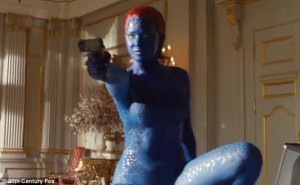
The platonic love between Charles and Raven is far more endearing and far more powerful a dynamic than any sexual undercurrent could add to it, the love Charles has for her in these films something greater than any romantic love could be.
This specific Charles/Raven relationship was one of the more interesting things established in First Class and it doesn’t have much of a precedent in the comics, so it was an interesting writing choice and one that I’m glad has been introduced to these films as it’s fascinating to explore.
Among the many moments in this film that managed to get me in the gut and play with my emotions a little was the scene where they do catch up with Raven in Paris; specifically it’s the sight of Mystique limping away with a bullet-wound, fully exposed in her true form to all the open-mouthed people in the plaza, snapping away with their cameras. It really is a horrific situation for her character, with all her intense self-consciousness, to be exposed to. We get the same effect with Hank/Beast shortly after, who is left shackled into place by Erik, utterly exposed in his ‘freakish’ form to the fascinated human crowd all gathering around to stare at the mutant freak.
Moments like that tend to prick my emotions as a viewer and are utterly in-tune with the tone and themes of the X-Men comics I was reading in my adolescent years (and with the early nineties animated show too); those themes of self-consciousness and paranoia about being ‘different’, of fitting in to society, of feeling like the outsider, like the archetypal ‘other’.
That was always also a central facet to Hank’s character and its captured beautifully in this one brief moment here.
Likewise the media frenzy created by Magneto’s botched attempt to kill Mystique also echoed themes I remember from my formative comic-book reading era. What also struck me was how utterly unfazed Erik was by all the cameras and attention, compared to Raven and Hank’s more agitated reaction and sense of being violated; but that makes some sense as Raven (at that specific moment) and Hank, like Kurt Wagner, are the more classic ‘mutant freak’ archetypes with a much higher degree of intense self-consciousness about appearance.
As someone myself who dealt with personal issues of that type, particularly during those adolescent years when I was first reading X-Men comics, this theme was always something that resonated with me; I always empathised most with those more vulnerable, more insecure, characters in the mutant world for whom the idea of being exposed like that in all their vulnerability was their worst nightmare.
The way this brief scene hits upon that is to my mind one of the most moving, effective moments of the film.
Speaking of moments that got me in the gut, the scene with Mystique in the vault looking at Trask’s files of the mutant victims that have been experimented on was definitely one of them. More than anything it was the Holocaust connotations of it that resonated; though of course the Holocaust connotations are always an element of the X-Men mythology, especially on the Magneto side. Those grim photos of dead mutants, including characters introduced in First Class, really bring to mind the crimes against humanity of the Nazi regime and the stories specifically of Doctor Josef Mengele and his experiments.
In those photos that horrify Mystique is the embodiment of everything Magneto has always believed he is fighting to prevent; the dehumanization and persecution of mutants by the worst elements of Humanity just like what happened under the Nazis in his own childhood.
Moving on, the plot to free Magneto from the Pentagon is one of the great heists in cinema; it already feels utterly classic, with a perfect mixture of suspense, brilliant action, cinematic genius (the Quicksilver time-freeze sequence), humour (the Quicksilver/Magneto dialogue; “I don’t know karate; but I know crazy…”) and emotion. I also really liked seeing Magneto’s disorientation throughout that sequence, which Fassbender plays really well. It’s a perfectly-measured sequence in every respect.
I’ve talked about moments that got me in the gut, but speaking of Magneto, now I have to say the moment that got me smiling like a twelve-year-old purchasing his first ‘shiny’ embossed cover edition of his favorite comic title was the Magneto stadium lift sequence.
It’s one of the great ‘yes!’ moments of all these films.
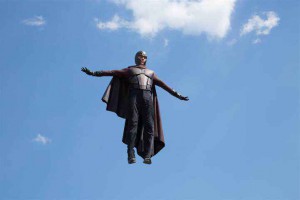
That’s it, that’s the moment right there – the moment, more than anything in any of the X-Men films, that felt like the Magneto I know and love from his golden era in the comics had arrived.
Watching that sequence, as he raises the enormous stadium and flies with it, his face the epitome of unwavering intent and righteous purpose, reminded me of a dozen glorious Magneto moments in the comic books. It’s an incredible display of power, but it’s not comic-book villainy, rather it’s power with purpose, power with pathos.
It’s Magneto. It’s really Magneto.
Forget that Golden Gate bridge sequence in X3, which was all spectacle and no heart – this is the kind of moment I’ve been waiting for since the very first X-Men film. The scene where he claims back his helmet is also pretty kick-arse, particularly the way he takes out the guards, which nicely echoes the older Magneto’s prison escape in X2. Fassbender always makes it look so damn cool and effortless.
I love also that every time in these films – in X1, in X3 and now in DOFP – that Wolverine tries to take on Magneto he is just tossed aside like an amateur. Not to play favorites; I mean I like Wolverine of course, but I love watching Magneto handle him. I mean it’s hardly X-Men #25 (1993) and Erik ripping the adamantium from Logan’s body, but it’s still fun to watch.
But speaking of the Magneto stadium lift and his attack on the White House, I have to say the bit that prodded at my emotions more than anything else in the film is when Magneto is making his speech to President Nixon and the Cabinet (and yes, that little touch of Eric turning the TV cameras in his direction was a brilliant little detail); as he condemns the creation and legitimization of Trask’s Sentinels and the persecution of Mutantkind, Erik’s words are inter-cut with the scenes in the future of the fully-realised Sentinel killing machines slaughtering the last surviving X-Men, Blink, Sunspot and all.
That juxtaposition of Erik/Magneto on the one hand and his impassioned, righteous indignation and on the other hand the footage of his ‘fellow mutants’ in the future making their desperate last stand is very powerful, much the same way as ROTS‘s “Order 66” is. That juxtaposition was beautifully conceived, effectively pulling upon the heart-strings, with its depiction of soulless brutality, cold injustice and tragic heroism, Magneto prophesying what will happen in the future as a result of what these suited, executive men are doing and us as viewers seeing that horrific future play out for real.
Fantasy or comic-book cinema seldom if ever gets as powerful as this; but the X-Men world has always had the relevant societal and political themes that help create this kind of resonance – a resonance often tied to its permanent relevance.
____________________________________
So, more broadly speaking, does the film’s final act live up to the breathtaking set-up? In general I do think the first half of the film is much stronger, has more momentum and excitement, than the second half.
However, while Mystique and Magneto both standing down and wondering off felt like a bit of an anti-climax, it was more than compensated for on the satisfaction-level by the reappearance of Jean, Scott, Rogue and co when Logan awakes at the school (again, more on THAT in a bit). We also got the appetite-whetting Apocalypse post-credits scene, both of which counteracted any possibly anti-climatic elements.
That said, the Mystique-as-Stryker ending with Wolverine being hauled out of the river felt like a very unsatisfying, very untidy ending to what had otherwise been such a beautifully measured film. I understand that they want to set-up for future developments, but as a film on its own self-contained merit it would’ve worked a lot better to have the main film finish with Logan and Professor X at the mansion and then the simple post-credits Apocalypse scene to set up the 2016 movie.
But that’s the writer in me talking.
As for the newly-featured characters plucked from the vast X-Men comic-book family, Quicksilver and Blink were a joy to watch – and those were the two I was most concerned about beforehand. Sunspot looked pretty cool too, though admittedly we’re only dealing with superficialities here as those characters – Quicksilver notwithstanding – have little or no dialogue or character-building and were there purely for colour and spectacle. But on that level, they served their purpose well enough. This often hasn’t been the case in the X-Men movies – X3 had some awful ‘cameos’ that did nothing but aggravate comic-book fans and so did the Wolverine Origins movie.
But in DOFP, it’s done very well – Blink serves her purpose beautifully, being a visually stunning character, and the same with Sunspot/Roberto Da Costa.
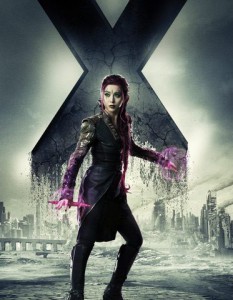
I smiled irrepressibly every time Blink appeared and opened a portal – it just looked so damn cool and she looked terrific.
I prefer the look of Blink in the comics, but even so, she was a joy to watch in this version too. Which just perfectly illustrates that there doesn’t have to be an either/or situation in regard to comics and films – this adaptation of Blink we see on screen is terrific for its medium and does nothing to undermine the perception/idea we have of comic-book Blink.
I’m really glad they chose to include her in this one.
Quicksilver (though strangely only referred to in the script as Peter Maximoff), meanwhile, gets possibly the film’s most memorable scene, during the sequence dealing with the liberation of Magneto from the Pentagon.
For anyone who hasn’t seen the movie yet, you’re going to love this moment; a Quicksilver-perspective moment where time slows down and Maximoff ineffectualises the bullets that have been fired at Charles, Erik and Logan. Already being talked about as the new ‘Nightcrawler/White House’ moment, this scene really was a joy to watch on first viewing, particularly as you just don’t see such a highly stylised tangent coming.
It’s so gleefully done, acting as this mad interlude to the larger sequence. Yet aside from being visually stunning, it also acts as an effective way to show things from Quicksilver’s perspective, a clever insight into his world and into the way he experiences things. It’s one of the standout moments of the X-Men film franchise.
I, like a lot people, had been unenthusiastic about pictures of the character ahead of the film’s release, thinking the character’s look was way off-target; but it just demonstrates effectively how misleading stills (and even trailers) can be and demonstrates the folly of overly prejudging things. I’ve always been a fan of the Quicksilver/Pietro Maximoff character from the comics, particularly from the early 90’s X-Factor era.
Generally the way Peter/Pietro is put across in this film really nicely captures that boredom element of his persona – that here’s a guy for who the world moves so slowly due to his sped-up awareness, so naturally he’s given up trying to slow down for everyone else’s sake or for politeness. Quicksilver’s involvement is actually one of the best things in the film, which was a very pleasant surprise for me. I hope we see him in future enterprises.
As for Bishop and Warpath, Bishop served his limited purpose well enough, although he didn’t seem much like the comic-book character; in fact he bizarrely has an African-esque accent from what I could tell.. which finally solves the mystery of Halle Berry’s on again/off again African impression over the first three X-Men movies. I have figured it out: Bishop must’ve travelled back in time to the year 2000, infiltrated the X-Men 1 set and somehow stolen Storm’s real accent, travelling back to the DOFP set to use it in his own scenes, leaving poor old Halle Berry sounding like a confused ventriloquist dummy for most of the first three films. God, I’m so clever!
As for Warpath, he seemed like the most arbitrary choice of the group, serving no real purpose, neither plot-wise nor even aesthetically. I mean I’d have gladly had Nightcrawler, Psylocke (a better Psylocke than the one we apparently had in X3 obviously), Jubilee, Magik, Domino, Marrow, or a half-dozen other possible characters there instead. Having said that, given how little dialogue/development Proudstar has here, maybe that was the reason he was chosen; just to fill out the desired quota.
OK, that’s most of the main elements covered. Now let’s talk about that ending with Logan waking up in the newly-altered ‘present’ at the mansion; or in simpler terms – the gi-normous ret-con extraordinaire of this movie franchise.
I said earlier I was happy to sidestep the film’s various logic issues and continuity issues; but there is one such issue that I really can’t sidestep if I’m to look at the film honestly and it’s this – the events of Days of Future Past resets the timeline of the X-Men film franchise, meaning that all of the pre-First Class movies are now of questionable relevance to say the least.
Now for most people having the events of X3 wiped from relevance is no sad loss (for one thing, it also makes me realise we can try to redo such key characters as Angel/Archangel and Psylocke in future films), but what about the first two X-Men films? Are we to have it now that both those films occurred in a different timeline to what we’re now watching? That is certainly the inference from that late Wolverine scene at the mansion.
Jean and Scott are alive. The Phoenix event of X2/X3 never happened. Nightcrawler never met the X-Men. And so on and so forth.
Never mind all the concerns about the film franchise taking liberties or messing with elements of the comic-book world – the films are now messing with their own continuity. Whether this bothers anyone is questionable. I doubt anyone is as precious about the X-Men movies as they are about the comic books. When I think about it, the only elements of X1 and X2, as much as I like those films, that I’m unhappy to have undermined by the new timeline are Nightcrawler’s introduction in X2 and honestly the Logan/Rogue relationship established in X1, which I always found very endearing.

Some might argue that the massive ret-conning of the franchise is to the overall benefit of the franchise and that X1 and X2 are improved by this; I’m not sure I agree with that yet. I think it’s something that’s going to need time for most of us to process. But X1 was always more of a basic introduction into the X-Men world more than anything else and I’m not sure there’s much in that movie to undermine at this stage.
Alternate timelines in general are something I’m not all too fond of in film and television franchises, even though these kinds of temporal-mechanics stories have sometimes been excellent in various mediums; it’s made for some classic science fiction in various forms, though it’s also been poorly used as a weak plot-device in various things (and in fact some classic X-Men comic-book stories have used this plot device to great effect, it can’t be denied). I think in Days of Future Past it works.
Here, the ret-conning of the timeline undoes or invalidates all the misjudgements of X3 and Wolverine Origins and can be seen to have served an editorial purpose beyond the narrative of the movie itself.
And I could complain about ret-conning and dodgy temporal mechanics, but I did absolutely love seeing Jean Grey show up at the end of the movie.
I’ve mentioned how much the film got me in the gut; maybe I’ve become a softie over the years, but I genuinely felt a pang of emotion at that moment Logan spots Jean alive and well at the school. Even though I hated X-Men 3 and even though I dislike the use of alternate or altered timelines, I have to admit that – on a purely emotive level – seeing Jean, and even Scott, alive and well and seeing Logan’s subtle emotional reaction, moved me.
I have to add that it moves me against my will (even against my better judgement); maybe it’s the soft-spot someone like me will always have for the halcyon environment of Xavier’s School For Gifted Youngsters and the classic characters and faces that classically populate those halls, dorms and classrooms; Charles, Jean, Scott, Hank, Rogue, Logan, yes even Ororo. I hate being emotionally manipulated by cinema or television – it makes me feel weak. But it is what it is and I felt what I felt – and yes, I was genuinely happy to see Jean and Scott in that late scene.
So I don’t think I can complain too loudly about this aspect of what DOFP does to the preceding films.
_______________________________
A few more observations, before wrapping this mammoth, giant-sized review up.
- I love the monastery setting of those future scenes with Charles, Kitty and the others. On a purely aesthetic level it was a visually terrific setting for those scenes; but for my comic-book-fan self it also reminded me of several classic moments from the X-Men annals, particularly the French monastery scenes in Uncanny X-Men #300 (1993) or when Charles gathered all the secondary X-Men teams together in X-Factor #106 (1994) – apologies to non-readers of that era, who might not know what I’m referring to. But that monastery setting seems strangely resonant in terms of the comics.
- As I said, I’m willing to overlook for now the several logic/continuity questions in DOFP, such as issues about Wolverine’s adamantium claws or Kitty’s ability to send people’s minds back in time. Or a bigger one: how is Xavier alive after the events of X-Men: The Last Stand? Regardless of whether his consciousness was transferred into the coma patient shown in X3 and referred to by Doctor MacTaggart, his body was certainly obliterated by Jean in that film. But I’ll let everyone else attempt to resolve those questions for now.
- I really liked this Peter Dinklage interpretation of Bolivar Trask, but I’m getting bored of William Stryker; I mean OK, Mystique posing as Stryker might be more interesting, but as for Stryker himself – enough already. He was interesting in X2 – that was it. Get some other villains; there are plenty to choose from.
- I have to admit I prefer the more classic look of the Sentinels from the comic-books and the cartoons; these Sentinels in the film are obviously re-imagined for optimal cinematic effect, designed to be more scary, more brutal in a more Terminator-esque vein, which I guess is fine. It works for its purposes; it’s possible the more classic Sentinel look wouldn’t have translated very well into cinema, possibly coming off more cartoony than menacing. These re-imagined Sentinels definiely have the intended air of relentless brutality and that does make those China sequences much more bleak, much more upsetting, than the classic Sentinels would have.
- Though less central to the story, it’s also worth mentioning how well Hank McCoy/Beast is written in this film too. I will always prefer Kelsey Grammer’s definitive portrayal of this quintessential X-Men character in X3: The Last Stand to anything that can now follow; it isn’t Nicholas Hoult’s fault that he has to follow Kelsey Grammer’s act. And as far as the writing of the character goes, this is possibly the most effective characterisation of Beast we’ve yet had. I love that it’s him that’s looking after Charles at the mansion in 1973, as that feels very nicely in keeping with the Professor X/Hank McCoy relationship in the comics; I’ve always felt that of all Xavier’s students Hank McCoy was the closest to being regarded by Xavier as an equal in both intellect and even at times authority. The Beast has always been one of my favorite X-Men characters; always more about intellect and wit than the physical side of things, not just in the comics but in the 90s cartoon too. In this film the relationship between him and Charles was one of the most pleasant writing decisions for me; his initial ruck with Logan was a highlight too.
- I also have to say I had a gleeful smile on my face watching the post-credits desert scene of those ancient Egyptians chanting “En Sabah Nur!” and the camera’s slow, teasing approach to reveal the pale blue complexion of a young man who of course can only be the fearsome Apocalypse himself. Even having known about this post-credits reveal ahead of seeing the movie, it still got the fan-boy in me excited, as we anticipate 2016’s introduction of the legendary X-Men villain into the film world. My friend who I watched it with didn’t know about it beforehand and he was grinning like a Cheshire cat when Apocalypse appeared. It’s an awesome post-credits add-on as it is, but imagine if this was the teaser trailer for X-Men: Apocalypse (say a year-and-a-half from now they just put this 20 second clip out as a trailer and we hadn’t seen it here yet)… how awesome would that be: just this scene of Apocalypse using telekinesis to construct the pyramid, as the Four Horsemen appear in the background, no words, no text, just the chanting and the reveal.
- It’s easy to forget him, but the portrayal of Richard Nixon we get here is pretty good in my opinion. Purely in terms of mannerisms and tone this one is pretty spot-on; obviously there isn’t the scope for depth in the portrayal here that, say, Frank Langella has in Frost/Nixon, but as a base-level Richard Nixon this was great. Also worth mentioning is Magneto and the JFK connection. I loved the idea that Magneto was responsible for the curve of the famous ‘magic bullet’ in Dallas even more than the subsequent explanation that Eric was there to prevent the assassination. Though it’s hard not to love Eric’s revelation that “he (JFK) was one of us”. Wonderful. And it’s great that these films, though they can never build up as much as the comic canon, are creating their own canon and identity. What would’ve been fucking incredible, however, would’ve been an actual flashback sequence of the Kennedy assassination scene and with Magneto on the scene trying to do his part. I totally understand why it wasn’t included, however.
- I don’t know if I’m right (I haven’t had time to check elsewhere) but I’m pretty sure we see Cable briefly in the opening sequence during Xavier’s voice-over description of the mutant Holocaust in the future. That might foreshadow his entry to the film franchise somewhere down the line.
- I utterly adored the Star Trek: TOS homage in the scene where Hank is forwarding his theory to Charles and Logan; especially for the fact that William Shatner’s face remains in shot for most of the scene.
- Casting issue aside, Sunspot did look utterly awesome every time he used his powers. Give me him over Sunfire any day. And Johnny fucking Storm doesn’t even come to it.
- Patrick Stewart’s opening monologue at the beginning works very effectively, his tone suitably frail and tender. I do wonder, however, how it would’ve sounded if McKellin had been doing it instead; a Magneto monologue might’ve been a more interesting and less obvious choice. I mean McKellin could read out a grocery list and it’d sound fascinating.
- Director Bryan Singer cameos during Mystique’s escape in Paris, but admittedly I didn’t spot him. X-Men comic-book greats Chris Claremont and Len Wein appear as United States congressmen too, however, which is nice; I still remember Claremont’s cameo early in X3: The Last Stand, specifically in the Jean-as-a-child scene. Who next for the cameo treatment? Why not Scott Lobdell or Jim Lee maybe?
- I know it was revealed as an April Fool’s gag, but I almost think it would’ve been cool (in a so not cool it becomes cool sort of way) to have had Lady Gaga as Dazzler 🙂 Just a quick flash of her at the mansion when Logan wakes up. Or better yet she could be slaughtered by the Sentinels in the China sequences.
- Jubilee was also a character said to have been considered for this movie, with concept images viewable on-line. I’m not sure where she would’ve fit into this film, but I would gladly had her in place of Warpath. We are going to have to see Jubilee properly at some point, it’s surely a given.
- As touched on already, Quicksilver was terrific, a real highlight of the movie. Which makes me wonder how the version of the same character we’re going to see in the next Avengers movie is going to compare. It’s going to be very difficult for that next version to follow Evan Peters’ take in DOFP. He certainly can’t try to be funnier and I can’t imagine how anything in the Avengers movie can top the time-out scene in DOFP. This highlights the folly – in my opinion – of having the same character appearing simultaneously in two separate franchises that can’t crossover with each other; one of them should’ve just decided to let the other have him. And given that Pietro is both a mutant and the son of Magneto, X-Men gets first dibs.
- On a related matter, I’m glad the film chooses to acknowledge Pietro’s biological relationship to Magneto, or at least aludes to it anyway in that lift scene. It was a cool moment. That’s all that’s needed in a case like this; just an acknowledgement, as going into the matter too deeply would’ve distracted from the slow of the plot. The little girl we see watching ‘Daddy’ on TV with Peter is, we can assume, a young Wanda Maximoff (who we are also, apparently, going to see in the next Avengers film). That was a cute little moment actually.
- I thought the version of Toad we see in this film has a really cool look. I liked Ray Park’s Toad in X1 and I’m not sure which I prefer yet. But I like that we’re getting Toad in these films and I hope they do something interesting with him – because comics sure as hell haven’t done anything interesting with him for a long time.
- Havok is the sole X-Man (other than Mystique) to survive the transition between First Class and DOFP, which suggests he may feature more prominently in subsequent films. But is he or is he not Cyclops’s brother in these films? And is he the older brother in this universe?
- It’s a testament to how well measured this film is that this is the first time I haven‘t found Halle Berry’s Storm annoying; and it must be because she hardly has any dialogue (if any at all). I’ve realised now that when she’s just there being a superhero using her powers and not talking, she’s actually fine. Sort of like Jar-Jar being in ROTS but not being annoying, because he’s only in two tiny moments and doesn’t speak. Genuinely, I have more affection for Jar Jar Binks than the movie version of Ororo Monroe.
________________________________________
Before having seen this film, based on X3: The Last Stand and the Wolverine films, I would’ve said that the old X-Men franchise had had its day. But I feel differently now; which just demonstrates how much DOFP has breathed new life back into both sides of the franchise even as it paradoxically calls into question the subsequent validity of the earlier films.
Is there anything I wish was done differently? I’m not sure it was necessary to kill off Banshee and Emma Frost. If the point was to give Mystique further reason to be vengeful, it was unnecessary as the deaths of Azazel, Rictor and the other mutants was already enough to do that. But most of all I wish Anna Paquin’s scenes hadn’t been cut from the movie. That tiny shot of her in the late X-Mansion scene brought a genuine smile to my face and I would’ve loved to have seen Rogue play the role in this film that she was initially intended to.
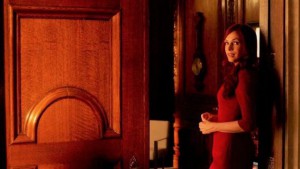
Simon Kinberg has stated that special effects have been completed for Rogue’s deleted scenes so that they can appear in the DVD release – I look forward to seeing those and anything else that might’ve been cut from the final film. And obviously I would have had Nightcrawler in the film in the future scenes, along with Kelsey Grammer’s older Beast.
In closing anyway, what more can I say about this film? Is it perfect? Probably not.
But X-Men is always too complicated, too character-laden, to make for the kind of immaculate cinema that films like V For Vendetta, Watchmen or The Dark Knight lend themselves to, all those types of films being much more squarely centered on fewer elements and not having to pander or cater to as much. But for a film as complex as this plot-wise, and as populated as this character-wise and as ambitious as this in general, to hit the mark on so many levels is itself a remarkable achievement.
Yet more than the fantastic set pieces or action sequences, it’s the character moments that really illuminate and elevate X-Men: Days of Future Past.
It’s a film that manages to inspire, manages to be moving and gripping and spectacular all in equal measures. It draws you into its dark, high-stakes world in a way that a number of other movies in the genre fail to do and it makes things matter and makes you care in a way that most big-budget movies (for me anyway) don’t. Maybe that’s partly my preexisting bias or interest-level, being long time Mutant and Proud, but I’d be surprised to find even non X-Men fans failing to be either moved or awed (or both) by one part of this movie or another.
DOFP is the faith-affirming restorative act I’ve been waiting for; the film that restores my affection and appreciation of the X-Men film franchise while helping right the wrongs of the past several years (First Class notwithstanding). While First Class was in itself also a good movie, I think in the case of DOFP it’s the involvement of the older cast members – Patrick Stewart, Ian McKellin, Famke Jansenn and Ellen Page, etc – that makes it feel much more like the quality-drop and petering out of the original X-Men franchise that transpired beyond X2 has been addressed; that somehow the earlier ensemble of characters and actors has been ‘redeemed’, given a more fitting swan song than X3 gave them.
Or perhaps even re-empowering them again for reintegration into the franchise’s future developments. The latter would be a good thing now, in my opinion.
But either way, the future of the X-Men film franchise suddenly looks incredibly bright again. Days of Future Past really does feel like an absolute game-changer. It also – and this is slightly off-point and entirely personal – gives me back a film franchise to be personally excited about and have an interest in, especially given my disapproval at this stage of the creation of a new Star Wars trilogy.
With X-Men I thought I’d lost that already; but now I feel like I have it back… and that’s a great feeling.
This movie entirely raises the bar; and while doing it it blows all of the competition out of the water as far as I’m concerned. But more important than that, it’s a film I’ve been waiting for a long time; the closest we’ve come to the type of X-Men film I’ve been imagining in my mind for over twenty years. And for that I’m thankful.
Listen to the ‘X-MEN: Days of Future Past’ podcast I recorded with Mumra 2K here on his channel.

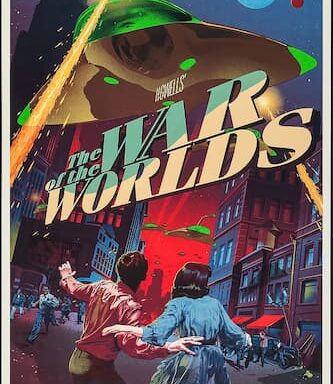
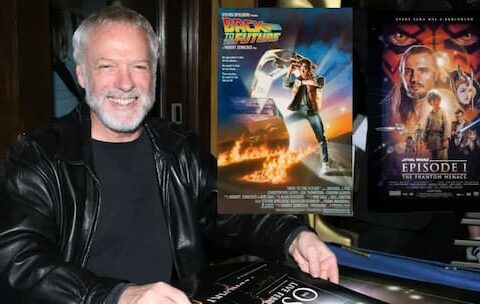
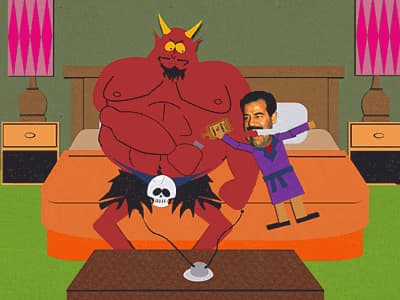
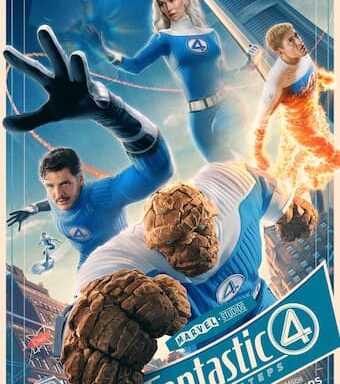
Blink’s portrayal in this movie was amazing. Eventhough it was in the same level and depth as the comics, she was brilliantly introduced, and left the audience wanting more. Quicksilver left a wee bit of a sour taste in my mouth especially with Wanda being much younger than he, other than that it was brilliant from concept to production. This is what the franchise needed Bryan Singer back at the helm.
I agree Jack – Blink was awesome to watch, just as a visual character. I was ok with Quicksilver, I felt it was a decent interpretation of the character, played for comedic effect. With Wanda, I can see your point, but the films are always going to have little things like that where they alter the original material to suit their film needs.